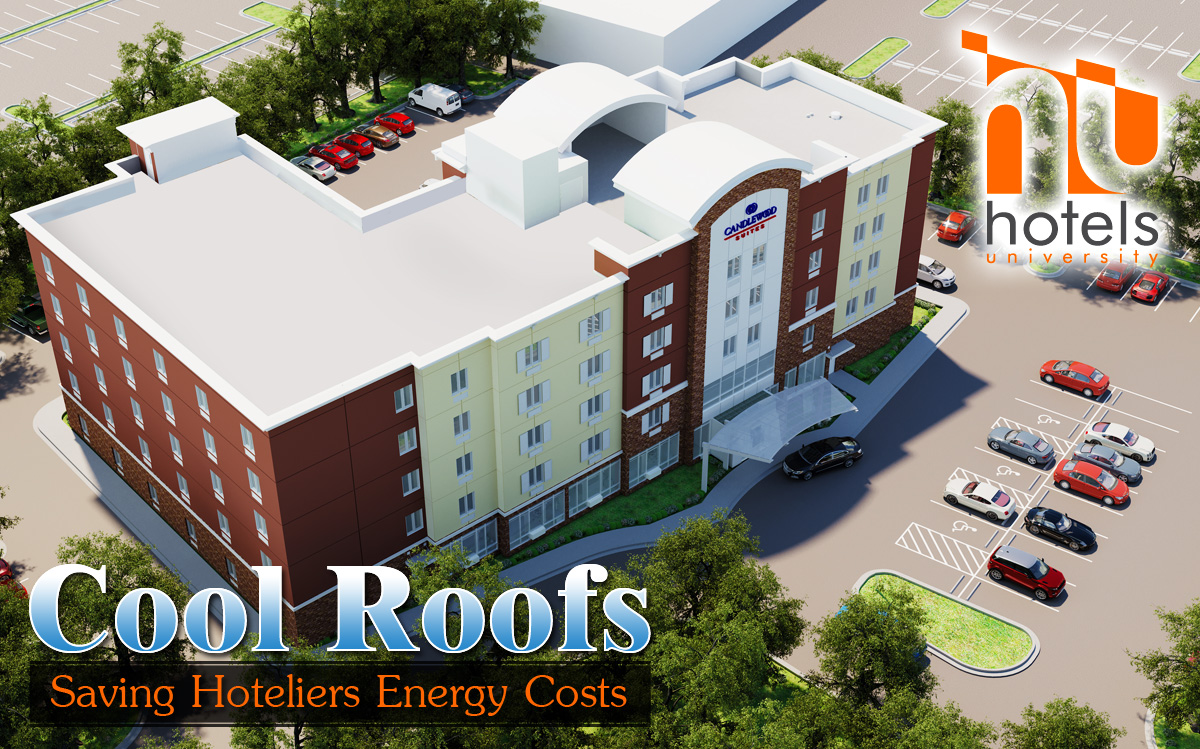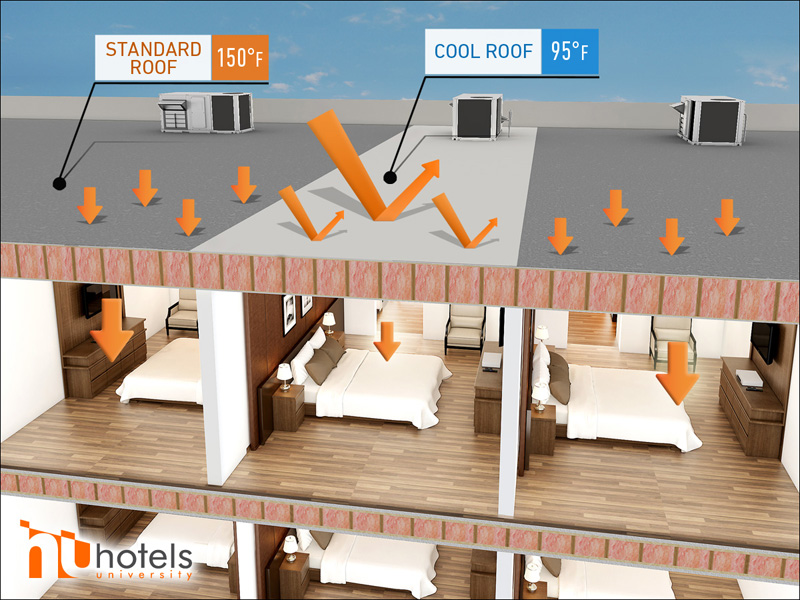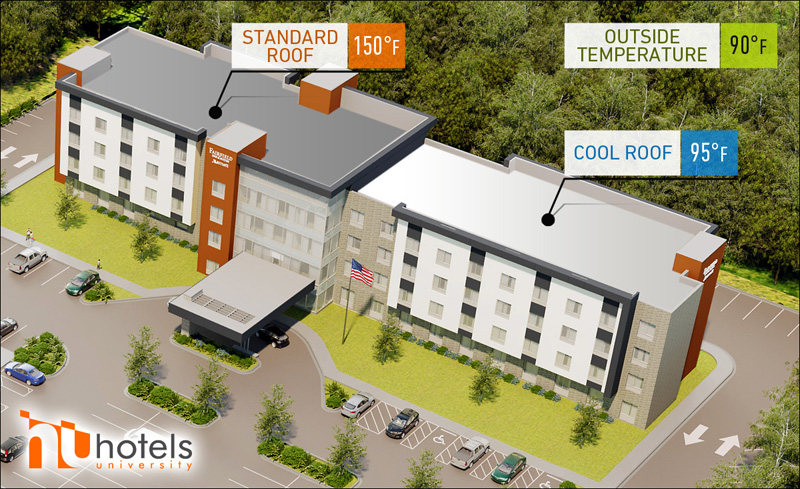Cool Roofs – Saving Hoteliers Energy Costs!
Hoteliers in warm and sunny climate zones often face the challenge of high monthly cooling expenses. After publishing a series on energy efficient hotel solutions, I received some questions about how a cool roof could be used in a hotel application. Cool roofs are a roofing that reflects sunlight and heat away from a building to reduce roof temperatures and the corresponding heat entering a building.
Roof Cross Section:
Basics:
- In the summer, we wear lighter colored clothing to reflect heat rather than absorb it to stay cooler. A cool roof works in the same fashion.
- Cool roofs are made of materials with High Solar Reflectance which is measured by the Solar Reflectance Index (SRI). The USGBC defines SRI as a measure of the constructed surface’s ability to stay cool in the sun by reflecting solar radiation and emitting thermal radiation. A standard black has an initial SRI of 0, and a standard white surface has an initial SRI of 100. These types of material are made of highly reflective paint, sheet coverings, membranes, or highly reflective tiles or shingles.
- Costs for cool roofs vary greatly based on roofing type and project geography. In general, developers should expect to pay a slight premium over a conventional roof.
Benefits:
- Reduce Roof Heat – Standard dark roofs can reach temperatures of 150°F or more in the summer sun. Cool roofs absorb less heat and stay up to 50–60°F cooler than conventional materials during peak summer weather.
- Reduce Energy Costs – A cool roof transfers less heat to the building below. This has been shown in studies to save building owners up to 10%-15% in energy costs during these time periods.
- Environmentally Friendly – Temperatures are often 2-5 degrees higher in cities than in their surrounding areas, because buildings emit more heat which stays in the atmosphere longer. This temperature discrepancy is the result of a phenomenon known as the urban heat island effect. Raised temperatures from urban heat islands, can affect a community’s environment and quality of life. This is why cool roof technology especially benefits buildings found in urban areas where heat island effect is an issue.
I’m looking forward receiving further questions from you to discuss the most suitable energy efficient solution for your project. Please don’t hesitate to contact me by email or phone.
Thank you,
Blair Hildahl
Blair@hotelsuniversity.com
608.304.5228





Leave A Comment